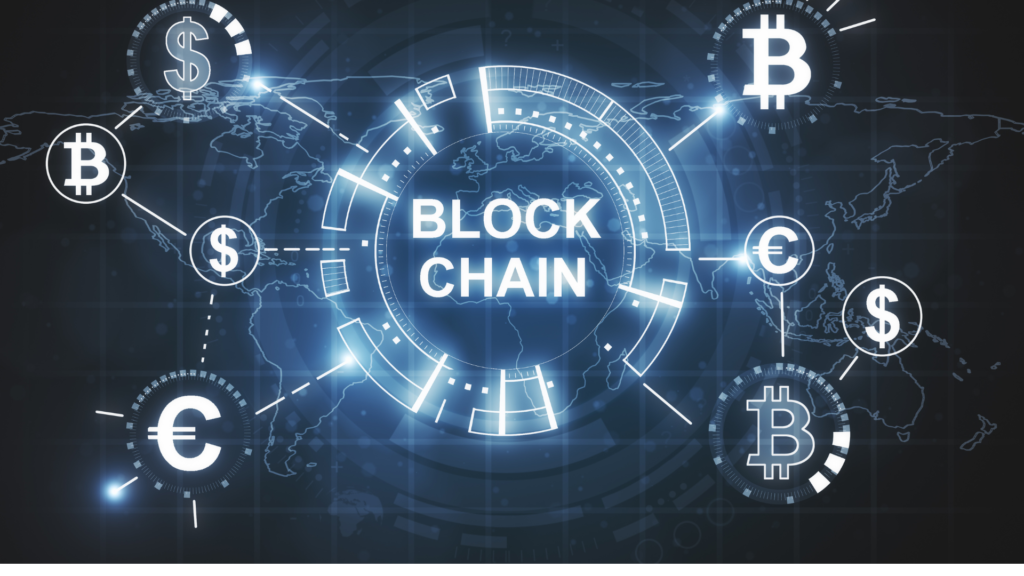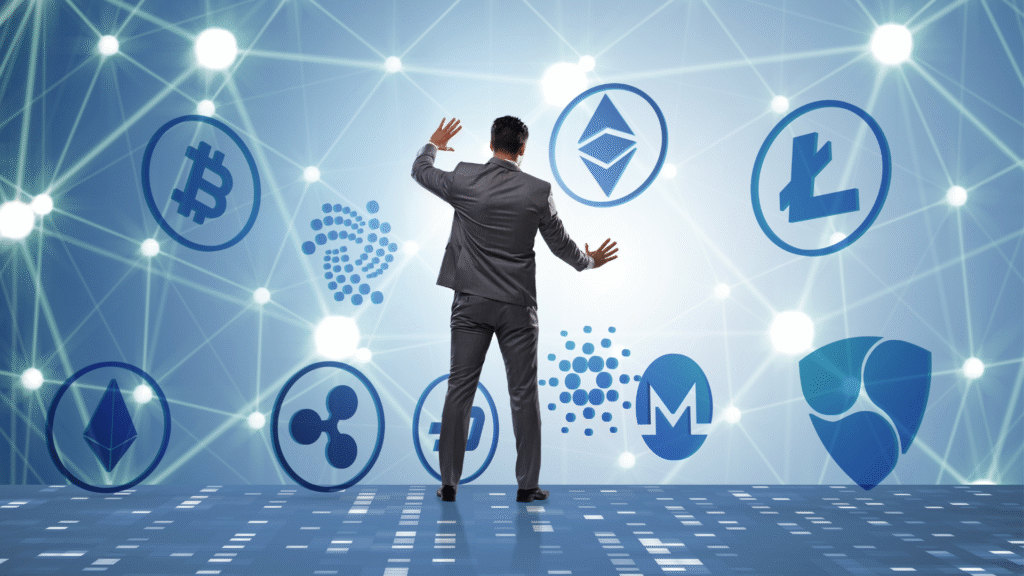The Role of NFTs in the future of digital assets has emerged as one of the most transformative discussions in modern technology. Non-fungible tokens (NFTs) are not just digital collectibles or flashy pieces of art sold online—they are the foundation of a new kind of economy where digital ownership is authentic, verifiable, and valuable. These tokens are redefining industries, from the way artists sell their work to how gamers interact with virtual items and even how investors approach real estate. Their importance lies in solving one of the biggest challenges of the digital age: proving ownership in an environment where duplication is effortless. As more people, businesses, and industries embrace NFTs, it becomes clear that they are not a passing trend but a cornerstone in the evolution of digital economies.
What Are NFTs?
NFTs, or non-fungible tokens, are digital assets stored on a blockchain, most commonly Ethereum, that certify ownership of a unique item. Unlike cryptocurrencies, which are fungible and interchangeable, NFTs cannot be exchanged on a like-for-like basis because each carries distinct metadata that makes it different from all others. For example, one Bitcoin is always equal to another Bitcoin, but one NFT may represent a one-of-a-kind artwork, while another may be tied to a piece of music, a video clip, or even a piece of virtual land.
This distinction is vital because it gives digital files something they historically lacked—scarcity. For decades, the problem with digital goods was that they could be copied infinitely, making ownership meaningless. NFTs fix this problem by attaching ownership rights to the blockchain, which acts as a decentralized, transparent, and tamper-proof ledger. This ensures that buyers know exactly what they are purchasing and can verify its authenticity without relying on intermediaries.
Empowering Creators and Artists
One of the most significant contributions of NFTs is the empowerment of creators. Traditional creative industries, whether art, music, or writing, often rely heavily on intermediaries like publishers, record labels, or galleries to connect artists with buyers. While these intermediaries provide exposure, they also take a large share of profits, leaving creators with limited financial benefits. NFTs change this dynamic by enabling creators to sell directly to their audience, cutting out the middleman.
Another powerful feature is programmable royalties. Artists can embed smart contracts within NFTs to automatically receive a percentage every time their work is resold in the future. This means that if an artist’s digital painting gains popularity and its value multiplies over time, the creator continues to earn revenue from secondary sales. In traditional markets, once an artwork is sold, the artist never sees further profit, but NFTs flip this system in favor of creators. As a result, many artists who previously struggled to monetize their work are now finding financial independence and global recognition.
NFTs in the Gaming Industry
The gaming industry has been at the forefront of NFT adoption because it already operates with virtual assets. For years, players have purchased in-game items like skins, avatars, or weapons. However, these assets were always restricted to the game’s ecosystem, meaning that if the game shut down, players lost their investment. NFTs revolutionize this model by granting true ownership of in-game assets. Players can now trade, sell, or transfer items outside the confines of a single platform.
This new model opens the door to player-driven economies. Gamers can become entrepreneurs by buying rare items early and selling them at a premium later. Entire marketplaces are being built where virtual goods can be exchanged for real-world currency, giving gaming a new layer of financial potential. Developers also benefit because they can create new revenue streams by selling NFT-based items, while players gain control and real-world value from their gaming experience.
NFTs in Music and Entertainment
Music and entertainment industries are being reshaped by NFTs in profound ways. Musicians, for instance, can release their albums as limited-edition NFTs, offering fans not just music but a collectible that holds value over time. These digital albums can be bundled with perks such as exclusive artwork, behind-the-scenes videos, or lifetime concert passes. By doing so, artists foster deeper fan loyalty while also monetizing their work in innovative ways.
For fans, owning an NFT from their favorite artist isn’t just about music—it’s about status and connection. It creates a sense of belonging to an exclusive club. Additionally, NFT technology enables fans to prove their support and ownership, something that cannot be replicated with pirated copies or streaming services. In the broader entertainment world, NFTs are being used for tokenized movie rights, fan experiences, and even ticketing systems that eliminate fraud by making each ticket traceable on the blockchain.
Real Estate and Virtual Land
Beyond creative industries, NFTs are beginning to transform real estate. In the digital world, platforms like Decentraland and The Sandbox allow people to buy, sell, and rent plots of virtual land as NFTs. These parcels are developed into digital stores, entertainment spaces, or even advertising hubs, proving that even intangible spaces can carry significant value.
In the physical world, NFTs have the potential to revolutionize property transactions. Imagine replacing stacks of paperwork and costly intermediaries with a simple blockchain-verified NFT deed that proves ownership. This system would minimize fraud, reduce costs, and streamline transactions. While these applications are still emerging, they point toward a future where NFTs bridge the gap between physical and digital ownership, changing how we think about property rights forever.
Building Decentralized Communities
Another dimension of NFTs is their role in building decentralized communities. Many NFT collections double as membership passes, giving holders access to exclusive online communities, real-world events, or voting rights within decentralized autonomous organizations (DAOs). These perks turn ownership into participation, fostering strong loyalty among members.
For instance, owning an NFT from a particular collection can grant access to private chat groups, early product launches, or in-person gatherings. This not only enhances the sense of exclusivity but also drives long-term engagement. In many cases, these communities generate cultural influence far beyond their digital origins, proving that NFTs are just as much about people and networks as they are about ownership of digital files.
Addressing Criticism of NFTs
Despite their popularity, NFTs face significant criticism. Some argue that they are speculative assets driven by hype, with little real-world utility. The boom of 2021 saw astronomical sales that led many to dismiss NFTs as a bubble. While this criticism is not without merit, it overlooks the broader picture.
The initial surge was indeed speculative, but the technology continues to evolve. Today, the focus is shifting from flashy artwork sales to practical applications like ticketing, intellectual property rights, and education credentials. These real-world uses demonstrate that NFTs are not just digital fads but long-term solutions to ownership challenges in multiple industries.
Environmental Concerns
Another common concern is the environmental impact of NFTs. Early NFT transactions relied on proof-of-work blockchains, which consume massive amounts of energy. Critics pointed out that NFT minting and trading contributed to carbon emissions at a time when sustainability is critical.
However, the industry has responded quickly. Ethereum’s shift to proof-of-stake reduced its energy consumption by over 99%, addressing one of the most pressing environmental criticisms. Furthermore, eco-friendly blockchains like Tezos, Flow, and Polygon are increasingly being used for NFT projects. These innovations prove that NFTs can coexist with sustainability efforts, making them more acceptable to environmentally conscious audiences.
Regulation and Legal Framework
As with any disruptive technology, NFTs face regulatory uncertainty. Governments and legal institutions are still debating whether NFTs should be classified as securities, commodities, or digital property. These questions are crucial because they affect how NFTs are taxed, traded, and protected under intellectual property laws.
While regulation is still in development, clarity will ultimately benefit the NFT industry. Clear rules will protect creators from theft, safeguard investors from fraud, and give consumers confidence in their purchases. Just as the internet required regulatory frameworks to flourish, NFTs need similar structures to move from experimental to mainstream adoption.
NFTs as Investments
Investors are drawn to NFTs because of their potential for high returns, but the market is also notoriously volatile. Some NFTs have sold for millions of dollars, while others have lost their value within months. This unpredictability makes NFTs both exciting and risky as an investment class.
Smart investors treat NFTs as part of a diversified portfolio rather than putting all their resources into them. They focus on projects with real utility, strong communities, and transparent development teams. While NFTs are still a young asset class, their potential to appreciate in value makes them a compelling option for those willing to navigate their complexities carefully.
The Future of NFTs in Digital Economies
Looking ahead, The Role of NFTs in shaping digital economies will only expand. With the rise of Web3, NFTs will integrate with technologies like artificial intelligence, virtual reality, and augmented reality. This will unlock entirely new experiences—such as attending a metaverse concert with an NFT ticket that also doubles as a collectible or proof of future access.
NFTs will also play a key role in identity management, allowing individuals to control and monetize their personal data. Businesses, too, will use NFTs for supply chain tracking, loyalty programs, and brand engagement. These innovations suggest that NFTs are not just about art or collectibles but will become a foundational part of how digital economies operate in the future.
Education and Mainstream Adoption
Despite the buzz, many people still don’t understand what NFTs are or how they work. This lack of awareness creates skepticism and slows down adoption. The industry must invest in education to make NFTs more accessible. User-friendly platforms, simple explanations, and educational resources will help bridge the gap between early adopters and the mainstream public.
As people grow comfortable with NFTs, they will become integrated into daily life, much like online banking or e-commerce. Just as skepticism about the internet faded in the early 2000s, doubts about NFTs will diminish as more practical use cases emerge.
Cultural and Economic Impact
NFTs represent more than just technology—they embody a cultural shift. For the first time, digital creations are being valued as scarce and meaningful assets. This challenges the old belief that digital files are inherently free or disposable. In a sense, NFTs elevate digital culture by assigning it real, verifiable value.
Economically, the benefits are wide-ranging. Creators gain financial independence, consumers receive unique ownership experiences, and industries find innovative ways to operate. The Role of NFTs in this cultural and economic transformation is profound, making them one of the most significant developments in the digital era.
Frequently Asked Questions (FAQs)
1: What exactly are NFTs?
A. NFTs, or non-fungible tokens, are unique digital assets stored on a blockchain that prove ownership and authenticity of digital or physical items.
2: Why are NFTs considered valuable?
A. Their value comes from uniqueness, scarcity, and verifiable ownership, making them desirable for collectors, investors, and creators.
3: How are NFTs used in gaming?
A. In gaming, NFTs allow players to own, trade, and sell in-game items outside the game ecosystem, adding real-world value to virtual assets.
4: Are NFTs bad for the environment?
A. NFTs that use proof-of-work blockchains consume significant energy, but newer proof-of-stake models are reducing environmental impact.
5: Can NFTs represent real-world assets?
A. Yes, NFTs can represent ownership of real-world assets such as real estate, event tickets, or intellectual property rights.




Pingback: Central Bank Digital Currencies (CBDCs):Global Case Studies - Your Partner in Tech Evolution
Pingback: Play-to-Earn Gaming: How Blockchain is Changing the Gaming Economy